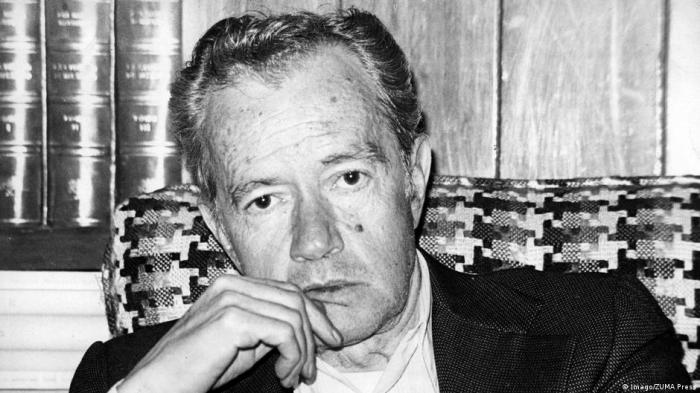No Dogs Bark by Juan Rulfo is a literary masterpiece that explores the profound themes of isolation and loneliness through its evocative prose and unforgettable characters.
The story delves into the psychological depths of Juan, the protagonist, as he grapples with the harsh realities of rural Mexico and the absence of human connection.
Literary Analysis: No Dogs Bark By Juan Rulfo

In Juan Rulfo’s enigmatic short story “No Dogs Bark,” the title itself serves as a profound symbol that encapsulates the story’s central themes. The absence of barking dogs suggests a lack of community and security, creating an atmosphere of isolation and loneliness that permeates the narrative.
Symbolism and Imagery
Rulfo employs a rich tapestry of symbolism and imagery to convey the story’s themes. The desolate landscape, with its barren fields and skeletal trees, reflects the protagonist’s inner emptiness and despair. The constant rain symbolizes the weight of sorrow and regret that burdens the characters.
Narrative Structure and Point of View, No dogs bark by juan rulfo
The story is narrated from the first-person perspective of an unnamed protagonist, which immerses the reader in his subjective experience. The fragmented and disjointed narrative structure mirrors the protagonist’s fractured memories and disoriented state of mind. This narrative technique contributes to the story’s haunting and unsettling atmosphere.
Character Study
Juan, the protagonist of “No Dogs Bark,” is a complex and enigmatic character. His psychological and emotional state is deeply influenced by his troubled past and his fraught relationship with his father. This analysis delves into the psyche of Juan, exploring the motivations and complexities that shape his actions and perceptions.
Juan’s Psychological and Emotional State
Juan is haunted by a profound sense of isolation and loneliness. The absence of his mother and the emotional neglect from his father have left him feeling abandoned and unloved. This emotional deprivation has manifested in a deep-seated insecurity and a desperate need for validation.
Juan’s actions are often driven by a desire to connect with others and to find a sense of belonging.
Juan’s Relationship with His Father
Juan’s relationship with his father is a central factor in his character development. The father is a distant and emotionally unavailable figure who fails to provide Juan with the love and guidance he needs. This has created a profound void in Juan’s life, leaving him feeling resentful and alienated.
The father’s lack of emotional connection has also hindered Juan’s ability to develop a healthy sense of self-worth and self-esteem.
Juan’s Search for Identity
The absence of a strong paternal figure has left Juan struggling to define his own identity. He is drawn to the allure of violence and danger as a means of asserting his masculinity and proving his worth. Juan’s involvement with the rebels is an attempt to find a sense of purpose and belonging.
However, this path ultimately leads to his downfall.
Setting and Atmosphere

The story “No Dogs Bark” by Juan Rulfo is set in a desolate and isolated Mexican village. The physical setting plays a crucial role in creating a mood of loneliness, isolation, and decay.
The village is described as a place where “the houses were all closed up, and the streets were empty.” The only sound is the “chirping of crickets” and the “howling of dogs.” The lack of human activity and the eerie silence create a sense of abandonment and desolation.
Sensory Details
Rulfo uses vivid sensory details to evoke a vivid and immersive experience for the reader. The description of the village as “dry and dusty” and the “smell of manure” conveys the harsh and unforgiving nature of the environment.
Juan Rulfo’s “No Dogs Bark” delves into the complexities of rural Mexican life. However, if you’re seeking assistance with understanding cell types, consider exploring the cell type gizmo answer key . Returning to Rulfo’s masterpiece, we witness the profound impact of loneliness and isolation on the human psyche.
The use of auditory details, such as the “chirping of crickets” and the “howling of dogs,” creates a sense of unease and isolation. These sounds are associated with the night and the unknown, and they suggest that the villagers are surrounded by unseen dangers.
Isolation and Loneliness
The setting of the story reinforces the themes of isolation and loneliness. The villagers are isolated from each other by their physical surroundings and by their emotional isolation.
The houses are all closed up, and the streets are empty, suggesting that the villagers have withdrawn into themselves. The lack of human interaction and the absence of any sense of community create a sense of alienation and despair.
Symbolism and Imagery

The story is replete with powerful symbols and vivid imagery that contribute to its overall meaning and impact. These elements enhance the reader’s understanding of the characters, themes, and atmosphere of the narrative.
Animal Imagery
Animals play a significant role in the story, particularly dogs. The absence of barking dogs symbolizes the isolation and loneliness experienced by the characters. Dogs are typically associated with companionship and loyalty, but their absence here suggests a lack of connection and support in the characters’ lives.
The White Dove
The white dove is a symbol of hope and redemption. It appears at a crucial moment in the story, offering a glimmer of hope amidst the darkness. The dove’s presence suggests the possibility of salvation and a better future for the characters.
Themes and Motifs
No Dogs Barkexplores profound themes of isolation, loneliness, and the desperate search for connection. These motifs permeate the story through its characters, setting, and plot.
Isolation and Loneliness
- The protagonist, Ignacia, lives a secluded life, isolated from her community and haunted by the loss of her son.
- The village itself is described as desolate and empty, with no dogs barking to break the silence.
- Ignacia’s interactions with others are brief and superficial, revealing the profound disconnect between her and her surroundings.
The Search for Connection
Despite her isolation, Ignacia yearns for human connection. This longing manifests in her interactions with the old man and his son.
- She confides in the old man, seeking solace in his presence, even though their relationship remains superficial.
- Her desire for a meaningful connection with the old man’s son is thwarted by his indifference and ignorance.
- Ignacia’s ultimate inability to forge genuine connections underscores the story’s exploration of the complexities of human relationships.
Contrast and Juxtaposition
Rulfo employs contrast and juxtaposition to highlight the complexities of human nature and the fragility of human connections.
- The desolate village contrasts with Ignacia’s vibrant memories of her past, emphasizing the stark reality of her present loneliness.
- The old man’s superficial kindness juxtaposes with his son’s indifference, revealing the superficiality of human interactions.
- The barking of dogs in the distance serves as a poignant reminder of the connections that Ignacia longs for but cannot attain.
Historical and Cultural Context
Juan Rulfo’s “No Dogs Bark” was written in the mid-20th century, during a period of significant social and political upheaval in Mexico. The story reflects the harsh realities of rural Mexican life, where poverty, violence, and superstition were pervasive.
Influence of Mexican Culture and Folklore
The story is deeply rooted in Mexican culture and folklore. The characters’ beliefs and actions are shaped by traditional Mexican myths and legends. For example, the fear of the “nahual,” a shapeshifting creature that can take on animal form, is a common theme in Mexican folklore.
In the story, this fear is used to create a sense of unease and foreboding.
Relevance to Contemporary Issues and Themes
Despite being set in a specific historical context, “No Dogs Bark” continues to resonate with readers today. The themes of poverty, violence, and the struggle for survival are universal and timeless. The story also sheds light on the challenges faced by marginalized communities in both the past and present.
Query Resolution
What is the significance of the title “No Dogs Bark”?
The title reflects the eerie silence and absence of life in the desolate setting, highlighting the protagonist’s profound isolation.
How does the use of animal imagery contribute to the themes of the story?
Animals, particularly dogs, symbolize the lack of companionship and the protagonist’s longing for connection.
What is the role of the setting in creating the atmosphere of the story?
The desolate and unforgiving landscape mirrors the protagonist’s inner turmoil and amplifies his feelings of loneliness and alienation.

